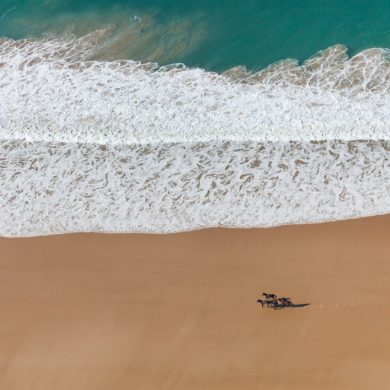Updated on 11 April 2023
Reading time: 8 minutes
As parents, you may be wondering how you could possibly explain something as serious and bloody as D-Day and the Battle of Normandy to your kids. Well, it should be possible I believe, from about, say, the age of 7 or 8. And it should certainly be possible to approach the subject in a way that includes some fun.
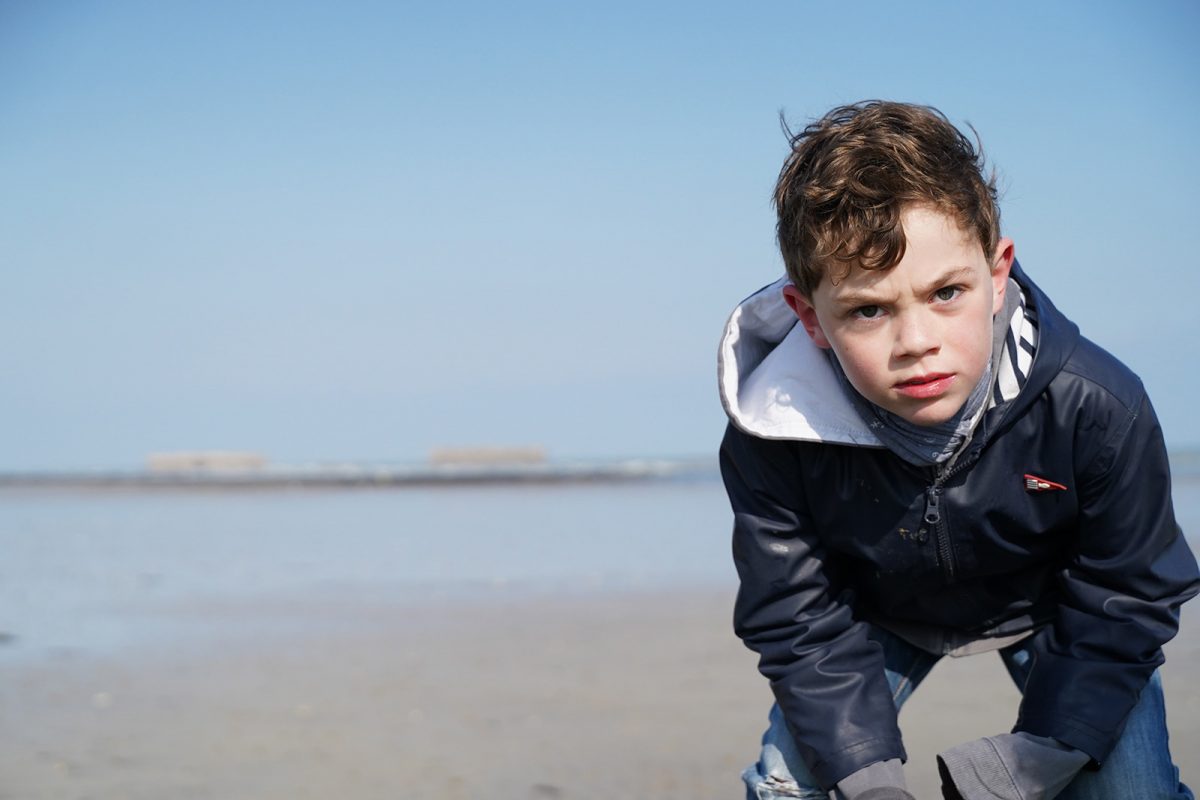
Follow me – but first of all let me introduce myself! I’m Dominique; in tow there’s my seven-and-a-half year son Simon (Oh yes, he insists on the “and-a-half” bit!!), and daughter Chloé, ten. My husband Mehdi and I like to think of ourselves as history buffs, so inevitably we’re drawn to this massive chapter of history, D-Day. But we want to tell it the way it was – after all, our kids are now at an age when they no longer believe in Santa Claus! The whole story is just too epic to muck around with the truth. For our journey back in time we chose to “set up camp” in Bayeux. It’s a town we love, with its cobbled streets, its well-preserved medieval heritage and its fine little restaurants. Why not make Bayeux the hub of our weekend programme!
A beach, but what a history!
Day 1. The school holidays have started. We’ve come to the seaside at Courseulles-sur-Mer. The weather’s not too bad for April; but we face grey skies, a few drops of rain, and there’s a chill in the air that we’re not used to! At least the children aren’t moaning – not yet anyway! We park alongside the Juno Beach Centre but they immediately run off to play on the beach. Hang on though – while this is a beautiful broad sandy beach, this is also where Canadian troops landed in 1944. To my utter amazement my little Chloe runs back up to me and says: “Mummy, mummy,” (she always says ‘mummy mummy’) “at the time of the Landings, was it high tide or low tide?”. Low tide, I answer, impressed. Must’ve done our stuff right somewhere then! I add that it was even colder and rougher than it was today, even though D-Day was in June. After messing around the way kids do, Chloe comes out with her first gripe of the day: “Mummy, mummy, this sand is SO gross, it’s all like messed up my jeans; my boots are all mucky…” Ah, that’s more like it, a normal kid after all with a normal sense of what matters most, i.e. messed up designer clothes. Then we enter a huge concrete bunker. She goes back to asking sensible questions. Simon picks up a stick and starts waving it about like a fake gun. Oh dear, boys will be boys I guess. I gently prise it from him: “Please Simon, don’t do that ….at least, perhaps not here?“ Mehdi points out to the kids a sign that reads “Do not walk on the dunes”. Seems we are in a protected area of coastline.
courseulles-sur-mer
The Juno Beach Centre: a museum with children in mind
Hard by the beach is the Canadian landing museum known as the Juno Beach Centre. Near the entrance stands a totem that caught the kids’ interest. An inukshuk no less, a symbol of hope and friendship, erected in 2005 by a delegation of the original Inuit peoples of Canada. Inside the museum, we are introduced to Vincent, one of the young guides. He explains to us that his “funny” accent (as he calls it), is because he’s from the French-speaking province of Quebec. The visit starts with a four-minute film projected in a room that conjures up a flat-bottomed landing craft. Eye-witness accounts evoke the history of the servicemen involved, and the challenges for their families left back in Canada. The first area within the museum itself is given over to the history of Canada in the 1930s. The exhibition, “Explore Juno with the family” is brand new. It’s all very “hands on”, which is great for the kids. Chloe and her dad hear about discrimination practised in Canada at the time: a country of immigration … but not, it seems, open to just anyone. Allow at least an hour and a half to visit the museum properly. The Centre awards “Poppy Points” at the end of your visit, a way to make it more fun, but evoking the sacrifice symbolized by the poppy, the springtime flower of 1919 that swathed the First World War battlefields in red where nothing else could grow. At the end of our afternoon, we head back to Bayeux, to our gite opposite the cathedral. Tonight we plan on pancakes for all!
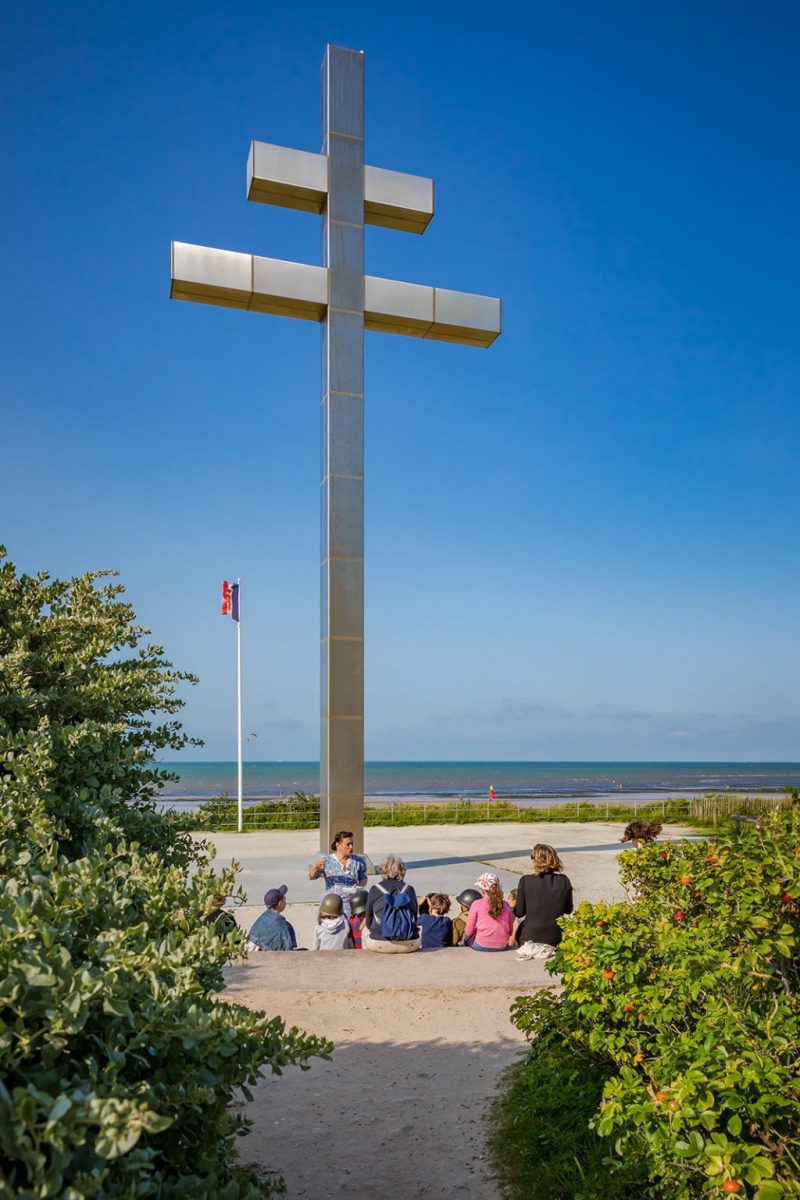

The absolute must for our second day: the “artificial” harbour of Arromanches
Day 2. Early to bed, early to rise, and it’s a splendid sunny day! By 9.30 we’re in Arromanches, which is perfect since we get ahead of the crowds. There’s always somewhere to park – provided you pay, but we don’t mind stumping up in order to park right by the beach, it all helps the local community and their fantastic museum. Or we could have parked on the hill behind the Arromanches 360° cinema, but we decide the walk down (and back) would be too cold. In the summer there’s a free shuttle between the two. The vast Gold beach (as it was coded) stretches east as far as the eye can see. It’s great just to take it all in. The salty air triggers off my own childhood memories, but here we wake up to the awesome achievement of the men who created this impressive so-called “artificial” harbour. As it’s low tide, the kids can walk out to the first concrete caisson of a line stranded on the beach. If it weren’t so dangerous it would have been a perfect place for a game of hide and seek, but we encourage them to play elsewhere – there’s enough room! After our visit Chloe and Simon spot opposite the car park an amusing life-size mural showing two girls of their age writing “Please, no more war” and “Love”. A good way to end our morning.
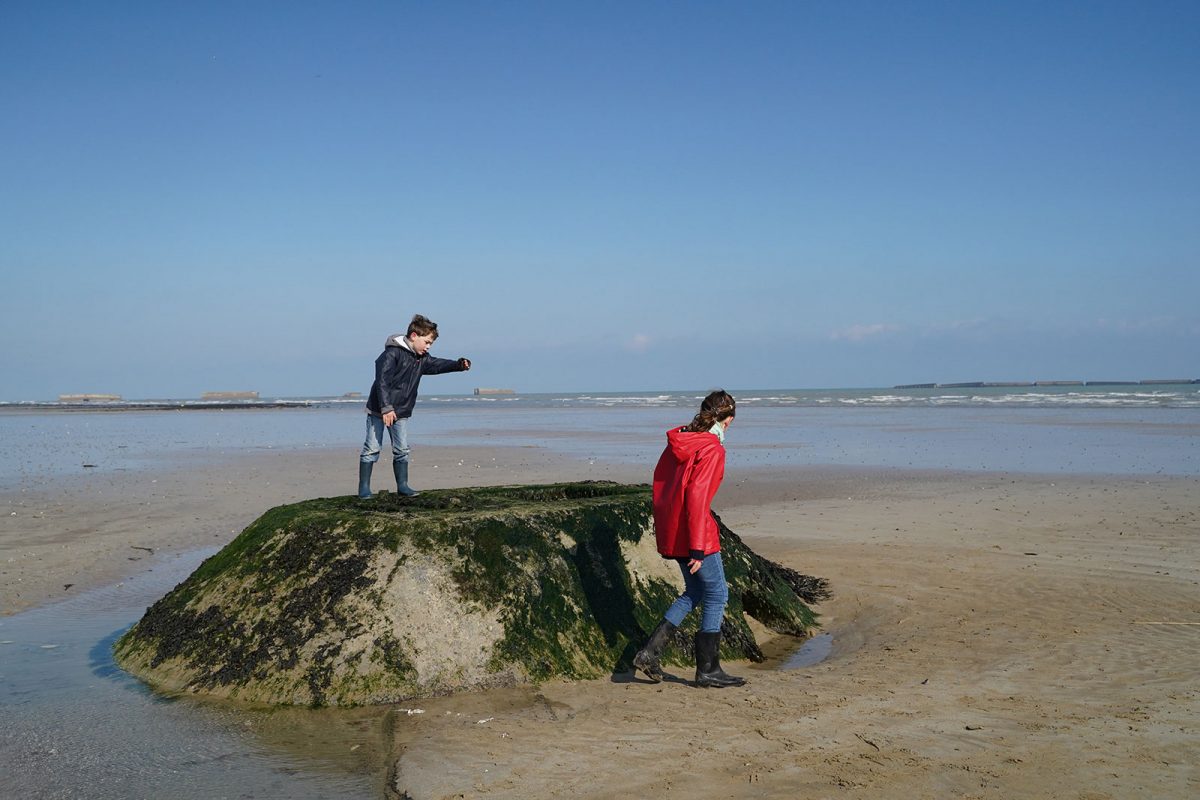

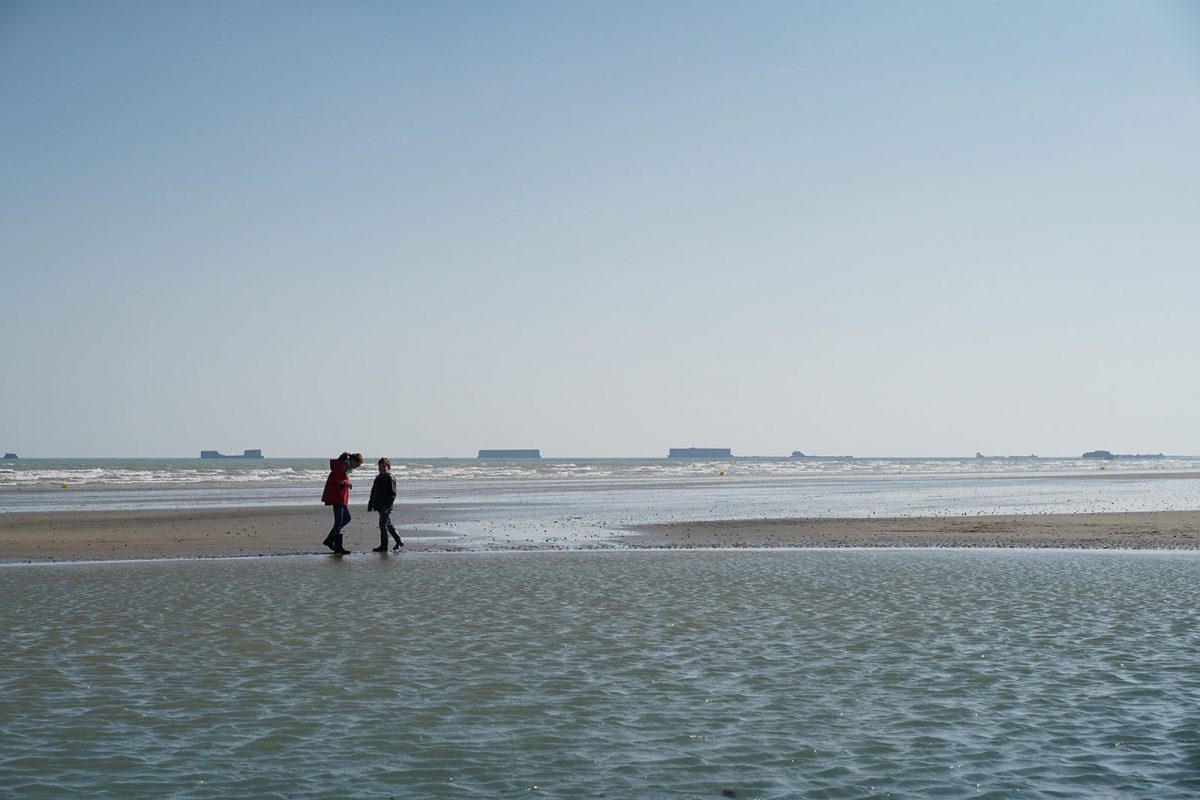
Disaster on Omaha beach
The weather is still a bit on the rough side but we decide to press on towards Saint Laurent sur mer to take a picnic sitting on the wall overlooking the very splendid war memorial called “The Brave”. The world-famous Omaha Beach gives plenty of room for play – now. Inevitably, in one of the sandy runnels Chloe at last succeeds in ruining her jeans, soaked right through (thank God I brought a spare pair in the car). Just as we are about to go, a party of Dutch soldiers are seen marching along the beach. “Mummy, mummy, are they going to save us from the Germans?” Chloe’s got a little too clever by half. “No dear,” I say, “They’re Dutch, and Germans are our friends now”. After our little mishap we shifty over to the D-Day House restaurant.
9 388 headstones: the American Cemetery
We park in the huge car park outside the cemetery. There are lots of people about, but nothing like the summer crowds. Hard to make out how many languages are being spoken in this world-famous site overlooking Omaha Beach. We stop by a reflecting pool behind the visitors’ center, with its map of the Landings and the progress of battle inland. In the setting of pine trees and the stunning view over the long sandy beach, it is hard to conceive that this is where nearly a thousand men died and many more were wounded on D-Day. When you come onto the first corner plot where 9388 marble headstones stretch out in serried ranks, our emotion catches us in the throat…Wow. Simon ventures out onto the grass and starts reading off first names in his piping voice: ”Kenneth………Frank…….Albert…”. It’s our little boy’s way of paying homage to the servicemen who gave their lives for freedom.
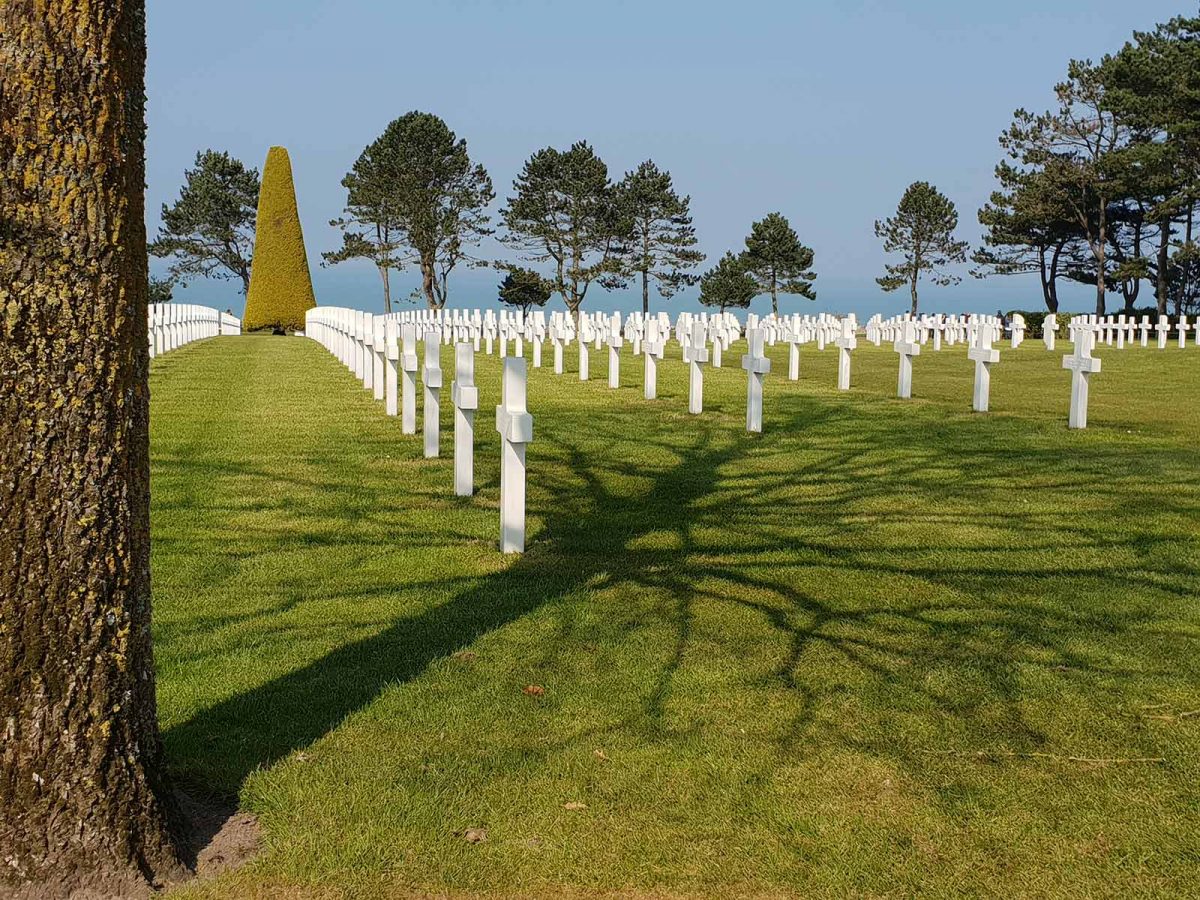
Taps: the moving ceremony of lowering the flags
The playing of Taps and the lowering of the flags takes place every day at 4 pm in low season and 5 pm in season. Today there are loads of young kids and teenagers. But the noise they usually make abruptly dies down as the ceremony begins. Mehdi, myself and the children all hold hands tightly as Taps is played and the flag slowly lowered and carefully folded in the traditional manner. You could have heard a pin drop – which we don’t. Just a light breeze that picks up to rustle the fresh leaves of spring. We take our leave of this iconic site of remembrance. We figure that these experiences will have helped to put flesh and blood into their history books, and by association to realise that there are values that we hold dear and are worth defending.
We get back to Bayeux and the next day we do a walking tour of this pretty medieval town, miraculously managing to escape any destruction in 1944. We take our time, popping in and out of the many shops, and savouring the simple fact of have the good fortune to be able to raise a family in peace and prosperity.



